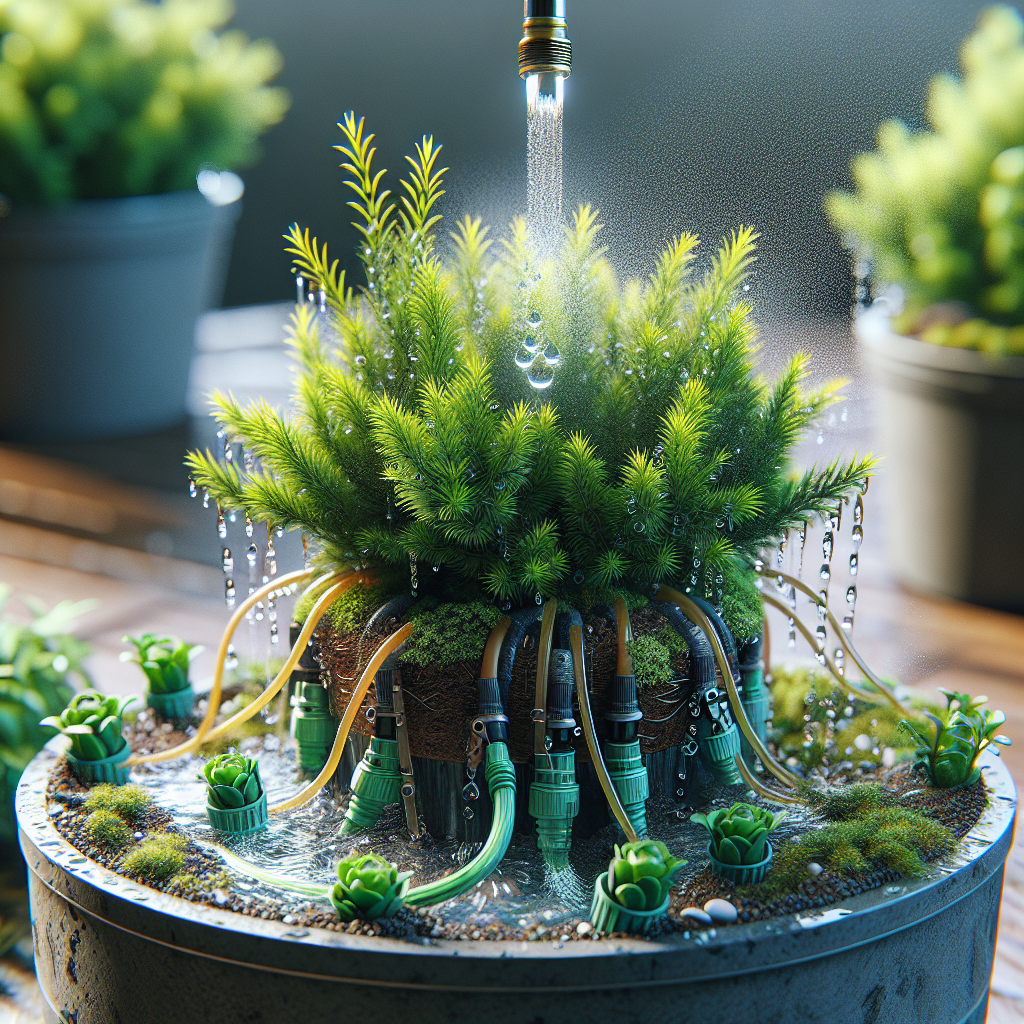Juniper plants are popular choices for container gardening due to their beautiful foliage and easy maintenance. However, one of the key challenges in growing junipers in containers is properly watering them to ensure they thrive. In this article, we will discuss how to master slow drip watering for juniper plants in containers to help you achieve healthy and vibrant growth.
Slow drip watering is a method of irrigating plants by delivering water directly to the root zone at a slow and steady rate. This technique helps prevent water wastage and ensures that plants receive the necessary moisture without over-saturation or underwatering.
Juniper plants are drought-tolerant and prefer well-drained soil, making them ideal candidates for slow drip watering. By providing consistent moisture to the roots, you can help your junipers establish strong root systems and avoid common issues such as root rot or dehydration.
Here are some steps to master slow drip watering for juniper plants in containers:
1. Choose the Right Container: Select a container with drainage holes at the bottom to allow excess water to escape. Ensure that the container is large enough to accommodate the juniper plant’s roots and provide room for adequate soil volume.
2. Use Well-Draining Soil: Junipers thrive in sandy or rocky soils that allow excess water to drain quickly. Avoid using heavy clay or water-retentive soils that can lead to waterlogged roots.
3. Install a Drip Irrigation System: Set up a drip irrigation system with adjustable emitters or tubing to deliver water directly to the roots of your juniper plant. Position the emitters near the base of the plant to ensure proper hydration without wetting the foliage.
4. Monitor Soil Moisture: Check the moisture level of the soil regularly by inserting your finger into the potting mix. Water your juniper plant only when the top inch of soil feels dry to touch.
5. Adjust Watering Frequency: The frequency of watering may vary depending on factors such as temperature, humidity, and sunlight exposure. During hot summer months, you may need to water your juniper more frequently than during cooler seasons.
6. Mulch Around the Base: Apply a layer of organic mulch around the base of your juniper plant to retain soil moisture and regulate temperature fluctuations. Mulching also helps prevent weed growth and erosion.
7. Consider Using Self-Watering Pots: Self-watering pots feature a reservoir at the bottom that allows plants to draw up moisture as needed through capillary action. These pots are especially beneficial for busy gardeners who may forget to water their junipers regularly.
8. Prune Regularly: Trim any dead or diseased branches from your juniper plant to promote air circulation and reduce water stress on healthy foliage. Pruning also helps maintain an attractive shape and encourages new growth.
9. Protect from Extreme Conditions: Shield your juniper plant from harsh weather conditions such as strong winds or intense sunlight, which can cause drought stress or leaf scorching. Consider moving your container indoors during extreme heat waves or frost warnings.
10. Observe Plant Health: Pay attention to any signs of stress or disease in your juniper plant, such as wilting leaves, yellowing foliage, or pest infestations. Address any issues promptly by adjusting watering practices or applying appropriate treatments.
By mastering slow drip watering techniques for juniper plants in containers, you can create an optimal growing environment that supports their overall health and vitality. With proper care and attention, your junipers will reward you with lush greenery and year-round beauty in any garden setting.
In conclusion, slow drip watering is an effective method for nurturing juniper plants in containers by delivering consistent moisture directly to their roots without causing waterlogging or dehydration issues. By following our tips on selecting suitable containers, using well-draining soil, installing drip irrigation systems, monitoring soil moisture levels, adjusting watering frequency, mulching around base self-watering pots pruning regularly protecting from extreme conditions observing plant health carefully – you can master this technique successfully! Enjoy watching your junipers thrive under these optimal growing conditions!














